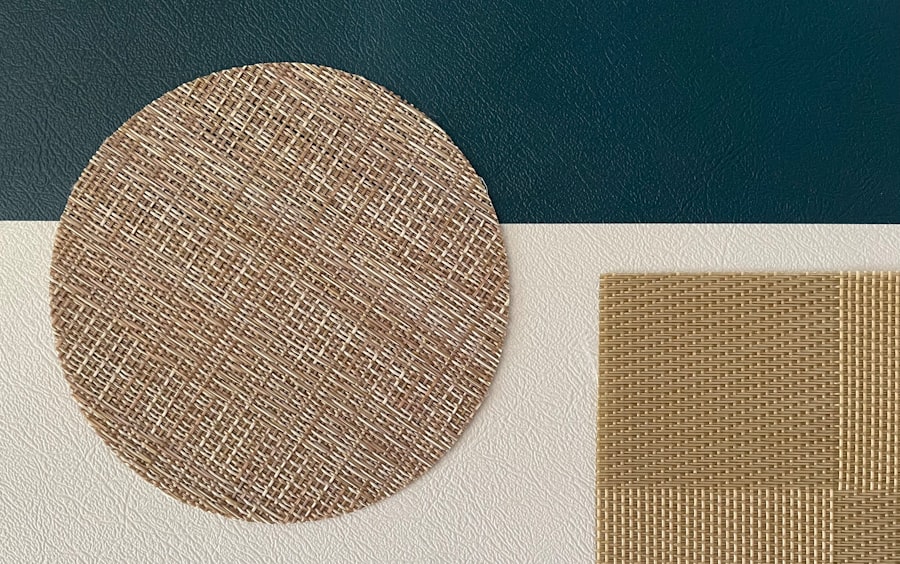Smart materials represent a fascinating intersection of science and engineering, characterized by their ability to respond dynamically to environmental stimuli. Unlike traditional materials, which maintain a static form and function, smart materials can alter their properties in response to changes in their surroundings.
The concept of smart materials is rooted in the principles of material science, where the intrinsic properties of materials are engineered to react to specific external conditions. The development of smart materials has been propelled by advancements in nanotechnology, polymer science, and materials engineering. These innovations have led to the creation of materials that can change shape, color, or mechanical properties when exposed to stimuli such as temperature, light, moisture, mechanical stress, or chemical changes.
The potential applications are vast and varied, ranging from self-healing materials that can repair themselves after damage to sensors that can detect environmental changes and respond accordingly.
Key Takeaways
- Smart materials are materials that can respond to environmental stimuli and change their properties accordingly.
- Environmental stimuli that smart materials can respond to include temperature changes, light, moisture, mechanical stress, and pH changes.
- Smart materials can respond to temperature changes by changing their shape, size, or color, making them useful in applications such as self-regulating building materials and clothing.
- Smart materials can respond to light by changing their transparency, color, or conductivity, making them useful in applications such as smart windows and sensors.
- Smart materials can respond to moisture by changing their shape, size, or porosity, making them useful in applications such as self-healing materials and drug delivery systems.
Types of Environmental Stimuli
Smart materials are designed to respond to a variety of environmental stimuli, each triggering a specific reaction that alters the material’s properties. The most common stimuli include temperature, light, moisture, mechanical stress, and pH levels. Each type of stimulus interacts with the material at a molecular or structural level, leading to changes that can be harnessed for practical applications.
Understanding these stimuli is crucial for engineers and scientists as they develop new smart materials tailored for specific uses. Temperature is one of the most widely studied stimuli in smart materials. Thermoresponsive materials can expand or contract based on temperature fluctuations, making them ideal for applications in temperature regulation and control.
Light-responsive materials, on the other hand, can change color or transparency when exposed to different wavelengths of light. This property is particularly useful in applications such as smart windows or photonic devices. Moisture-responsive materials can absorb or release water, leading to changes in volume or shape, which is beneficial in applications like humidity sensors or drug delivery systems.
Mechanical stress-responsive materials can alter their stiffness or shape when subjected to force, making them suitable for use in adaptive structures or protective gear. Lastly, pH-responsive materials can change their properties in response to acidity or alkalinity, which is particularly relevant in biomedical applications where pH levels can indicate disease states.
Smart Materials Responding to Temperature Changes

Temperature-responsive smart materials are engineered to undergo significant physical or chemical changes when exposed to varying temperatures. One of the most notable examples is shape memory alloys (SMAs), which can return to a predetermined shape when heated above a certain threshold. Nickel-titanium (NiTi) alloys are commonly used in applications ranging from medical devices like stents to actuators in robotics.
When these alloys are deformed at lower temperatures and subsequently heated, they revert to their original shape due to a phase transformation at the atomic level. Another category of temperature-responsive materials includes thermoresponsive polymers, such as poly(N-isopropylacrylamide) (PNIPAAm). This polymer exhibits a lower critical solution temperature (LCST), below which it is hydrophilic and above which it becomes hydrophobic.
This property allows PNIPAAm to be used in drug delivery systems where the release of medication can be controlled by body temperature. For instance, nanoparticles coated with PNIPAAm can remain stable at normal body temperature but release their drug payload when exposed to elevated temperatures associated with inflammation or infection.
Smart Materials Responding to Light
Light-responsive smart materials utilize photonic effects to induce changes in their properties upon exposure to specific wavelengths of light. One prominent example is photochromic materials, which can change color when exposed to ultraviolet (UV) light. These materials are commonly used in sunglasses that darken in sunlight and return to their original state indoors.
The underlying mechanism involves a reversible chemical reaction that alters the molecular structure of the material in response to light exposure. Another fascinating application of light-responsive materials is found in liquid crystal displays (LCDs). These displays utilize liquid crystals that change orientation when subjected to an electric field generated by light exposure.
This property allows for the modulation of light passing through the display, enabling the creation of images and text on screens. Additionally, researchers are exploring the use of light-responsive hydrogels that can swell or shrink based on light exposure. These hydrogels have potential applications in soft robotics and drug delivery systems where precise control over movement or release mechanisms is required.
Smart Materials Responding to Moisture
Moisture-responsive smart materials are designed to react to changes in humidity levels by altering their physical properties. One common example is superabsorbent polymers (SAPs), which can absorb large amounts of water relative to their own mass. These materials are widely used in products such as diapers and agricultural applications where water retention is crucial for plant growth.
When exposed to moisture, SAPs swell significantly, creating a gel-like substance that retains water. Another innovative application involves moisture-sensitive coatings that change color or transparency based on humidity levels. These coatings can be applied to surfaces such as walls or packaging materials to provide visual indicators of moisture content.
For instance, a coating that changes color when humidity exceeds a certain threshold could signal potential mold growth or spoilage in food products. Researchers are also investigating moisture-responsive textiles that can adjust their breathability based on environmental humidity, enhancing comfort for wearers in varying climates.
Smart Materials Responding to Mechanical Stress

Mechanical stress-responsive smart materials exhibit changes in their properties when subjected to external forces such as tension, compression, or shear. One notable example is piezoelectric materials, which generate an electric charge in response to applied mechanical stress. These materials are widely used in sensors and actuators across various industries, including automotive and aerospace applications.
For instance, piezoelectric sensors can detect vibrations or pressure changes and convert them into electrical signals for monitoring structural integrity. Another category includes shape memory polymers (SMPs), which can change their shape when subjected to mechanical stress and subsequently return to their original form upon heating or other stimuli. SMPs have potential applications in self-healing materials that can recover from damage by reshaping themselves under specific conditions.
Additionally, researchers are exploring the use of mechanical stress-responsive hydrogels that can change their stiffness or swelling behavior based on applied forces. These hydrogels could be utilized in soft robotics or adaptive structures that require flexibility and responsiveness.
Smart Materials Responding to pH Changes
pH-responsive smart materials are engineered to react to changes in acidity or alkalinity levels within their environment. These materials often incorporate polymers that undergo conformational changes based on pH fluctuations. One prominent example is polyacrylic acid (PAA), which swells significantly in basic conditions but contracts in acidic environments.
This property makes PAA suitable for applications such as drug delivery systems where the release of therapeutic agents can be controlled by the pH of the surrounding environment. In biomedical applications, pH-responsive hydrogels are being developed for targeted drug delivery. For instance, a hydrogel designed to release medication only at specific pH levels could be used for localized treatment of diseases such as cancer, where tumor microenvironments often exhibit altered pH levels compared to healthy tissues.
Additionally, researchers are investigating pH-sensitive coatings for medical implants that can prevent bacterial adhesion by releasing antimicrobial agents when exposed to acidic conditions associated with infection.
Future Applications of Smart Materials in Environmental Response
The future of smart materials holds immense promise as researchers continue to explore innovative applications across various sectors. In environmental monitoring, smart materials could be integrated into sensors capable of detecting pollutants or hazardous substances in real-time. For example, a moisture-responsive material could be used in soil sensors that provide farmers with data on irrigation needs based on soil moisture levels, optimizing water usage and promoting sustainable agriculture.
In the realm of construction and infrastructure, smart materials could revolutionize building design by incorporating self-healing capabilities that respond to environmental stressors such as temperature fluctuations or mechanical loads. Buildings constructed with these materials could autonomously repair cracks or damage over time, significantly extending their lifespan and reducing maintenance costs. Moreover, advancements in nanotechnology may lead to the development of multifunctional smart materials capable of responding simultaneously to multiple stimuli—such as temperature and moisture—enhancing their versatility across applications ranging from wearable technology to advanced robotics.
As research continues and new discoveries emerge, the integration of smart materials into everyday life will likely become more prevalent, paving the way for innovative solutions that address pressing global challenges while enhancing efficiency and sustainability across various industries.
In the realm of technological advancements, smart materials are increasingly gaining attention for their ability to respond to environmental stimuli, offering innovative solutions across various industries. A related article that delves into the technological advancements in consumer electronics is the Samsung Galaxy S23 Review. This review explores the latest features and innovations in the Samsung Galaxy S23, highlighting how cutting-edge technology is being integrated into everyday devices, much like how smart materials are being utilized to enhance functionality and adaptability in different environments.
FAQs
What are smart materials?
Smart materials are materials that have properties that can be altered in response to changes in their environment, such as temperature, light, or pressure. These materials are designed to be responsive and adaptive, and can be used in a wide range of applications.
What are environmental stimuli?
Environmental stimuli are changes in the surrounding environment that can trigger a response in a material. This can include changes in temperature, humidity, light, pressure, or other factors that can affect the properties of a material.
How do smart materials respond to environmental stimuli?
Smart materials can respond to environmental stimuli in a variety of ways, depending on their specific properties. For example, some smart materials may change shape or size in response to changes in temperature, while others may change color or transparency in response to changes in light.
What are some examples of smart materials responding to environmental stimuli?
Some examples of smart materials responding to environmental stimuli include shape memory alloys that change shape in response to temperature changes, photochromic materials that change color in response to light, and hydrogels that swell or shrink in response to changes in humidity.
What are the potential applications of smart materials responding to environmental stimuli?
Smart materials that respond to environmental stimuli have a wide range of potential applications, including in the fields of medicine, architecture, aerospace, and consumer products. For example, these materials can be used in self-healing materials, adaptive building facades, responsive textiles, and smart sensors.

